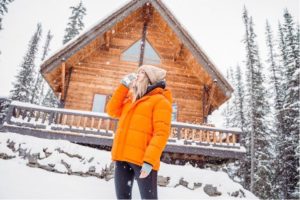Winter can be brutal, especially if you are unprepared for it. Most of us spend more time indoors during winter due to the snow and freezing temperatures outside. The snow cover will also make you miss the lovely green grass and the beautiful flowers you are used to seeing in your neighborhood. Ensure your family’s comfort during the colder months by considering simple home upgrades like adding proper insulation and checking for a lead-safe certification. Learn more about lead safe certification at aaaleadpro.com to create a cozy and worry-free winter haven.
However, you can look forward to spending more quality time at home this winter. You only need to make your home as cozy as possible. Of course, you should only trust your home to someone who can repair it professionally – this way, you can rest assure you won’t face any emergencies down the line. Besides a well-done heater installation by trained experts, you can try out the following simple home upgrades to make your winter more enjoyable and memorable.
1. Get A Whole-House Humidifier
Dry air within your house might cause issues such as cracked woodwork, dry skin, and static electricity. You will experience more such issues during winter when the air becomes drier. Acquiring a whole-House humidifier will take care of the situation by making the air more friendly. The humidifier will also stop your pipes from possible freezing, which may lead to costly damages.
2. Revamp Your Attic Insulation
Heat will likely escape through the roof when your attic lacks proper insulation, increasing your heating costs. Calling HVAC professionals to evaluate your attic’s insulation would be prudent. They can then improve the insulation if need be. While at it, such experts can also check whether any leaks need to be sealed to curb further heat loss. Your basement, floors, and walls need proper insulation to reduce heat loss.
3. Grow Some Plants
Apart from the beauty they add to your environment; plants also improve the air quality of your home. They enhance the humidity and filter toxins, making the air fresher. Spider, rubber, and snake plants are some of the best options for air-filtering. The additional humidity from plants is excellent for the usually dry winter air. Most importantly, plants bring some outdoor nature into the indoor spaces, making the atmosphere more relaxed and calmer.
4. Check For Drafts
If your doors and windows are drafty, they are likely to contribute hugely to heat loss in your home. You should check for drafts and have them sealed with caulk or weatherstripping. Such a simple upgrade might save you vast amounts of heat loss, making your house warmer and comfier. If your windows are damaged or worn out, make plans to replace them before the winter season knocks at your door. New windows will not only be more energy-efficient but will also enhance your home’s look.
5. Secure Your Pipes
Frozen water expands, which can easily make pipes burst. During winter, when temperatures drop, burst pipes become a common occurrence. To avert such costly damages, insulate your pipes and keep them warm using heat tape or pipe insulation.
You also need to maintain the room temperature above 55 degrees Fahrenheit, within your house and keep the cabinet door below the sink open to allow circulation of warm air. The action will stop such pipes from freezing and bursting.
Conclusion
You have to bear in mind that upgrading your home cannot be a one-off event. It is an exercise that needs several days of preparation and execution. The improvements must be made gradually, which explains why you need to make them several weeks before winter begins.


